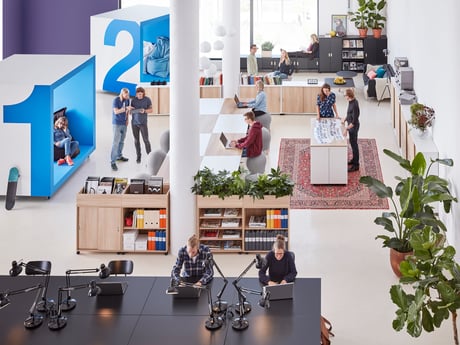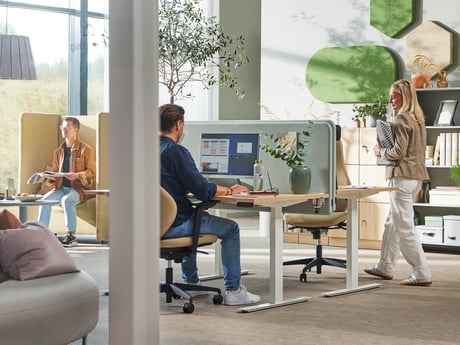- AJ Products UK
- Blog: Tips to Inspire Happiness at Work
- Improving the work environment
- How to prevent your open office from harming productivity
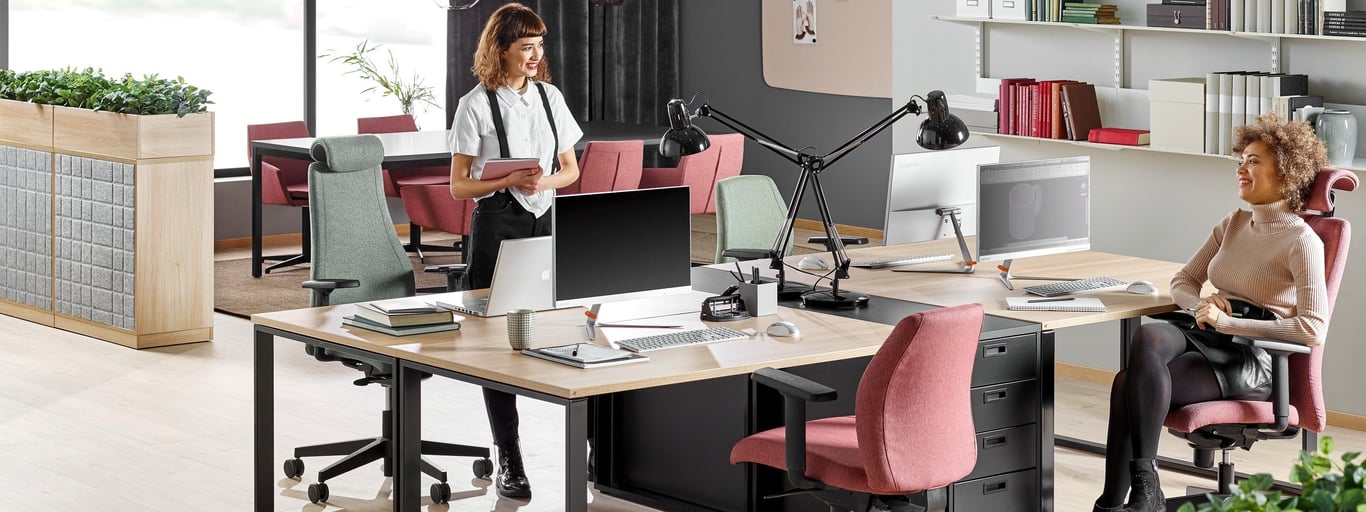
How to prevent your open office from harming productivity
Working in an open office can affect your focus and increase stress levels due to the high noise levels and lack of privacy. Ironically, a 2018 Harvard Business School study found that open-plan offices actually lead to a 70% decrease in face-to-face communication by causing people to socially withdraw from their co-workers.
Many businesses also fail to take into account different personality types: while extroverts often like to work in collaborative spaces where they can communicate with colleagues and discuss ideas, introverts usually prefer quiet spaces where they can concentrate without distraction.
We outline some of the most important factors to consider, and how to address them, to ensure that your open-plan office is a harmonious and effective working space for everyone.
Acoustics
Generally considered to be the biggest problem with open-plan offices, high noise levels reduce concentration and distract people from their work. According to a 2017 Sodexo study, 51% of workers claim that reducing unnecessary noise is the single most important factor to improving their effectiveness at work.
There are many simple ways to reduce the background noise in an open workplace without having to make major changes to the office layout. Acoustic solutions such as desk screens, acoustic wall panels and ceiling hanging panels are designed to reduce overall noise levels by absorbing sound reverberations. Soft furnishings and rugs are also excellent for improving acoustics naturally, they break up hard surfaces, dampen echo, and make spaces feel more comfortable and inviting.
Sound-masking systems and acoustic panels can be retrofitted into almost any office, making them a cost-effective and highly impactful way to improve the soundscape.
Privacy
Another common complaint about open offices is the lack of privacy they afford; in many respects this goes hand in hand with the issue of noise. Many people prefer to work silently and alone to be at their most productive; this can also depend on the type of role you’re in and the task you’re currently trying to complete.
At the most basic level, desk screens provide a barrier between each desk so that each employee has their own space and is not constantly overlooked. A more effective solution is to provide plenty of quiet private spaces for workers to use as and when they want.
An acoustic booth or pod is an affordable and functional way to create a secluded space that can become a temporary private zone. Not only does it offer a space that is physically separate from the rest of the office, but it also muffles sound, providing conversational privacy so it is possible to have a conversation with a colleague or take a phone call without being overheard.
The activity-based workplace
An effective way to address the problem of an open workspace is to divide the office into different zones. An activity-based workplace (ABW) provides a mixture of open, semi-private and private spaces in one office to cater for the needs of all the staff who work there.
Use tall furniture and acoustic screens to build "rooms" within the room to separate noisier areas from allocated quiet spaces. Consider how often you use meeting rooms and whether any of those could be turned into a library-style silent working space.
By offering diverse work environments in the office, you support different personality types as well as different roles in the company, increasing productivity and employee satisfaction.
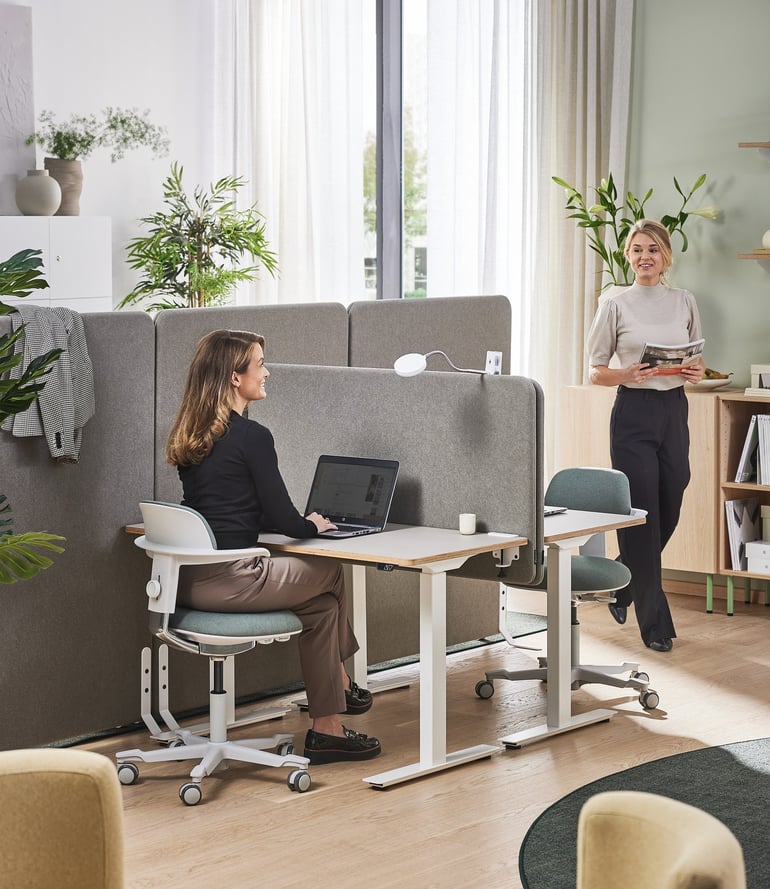
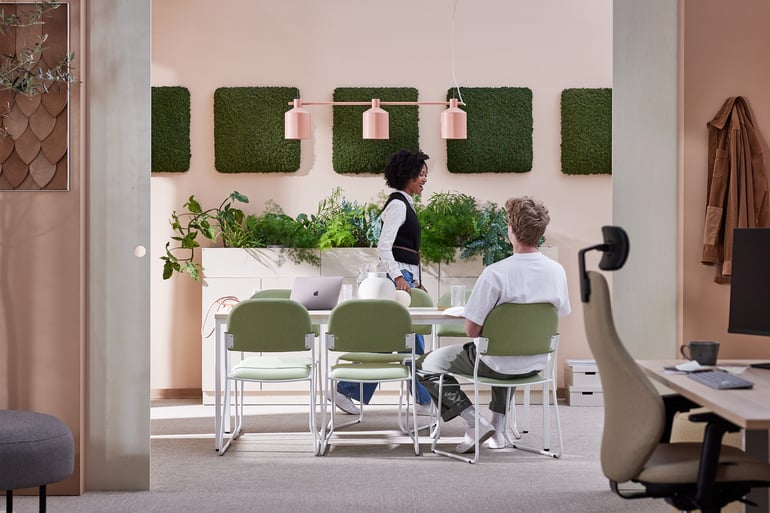
Encourage focus hours
Even with zoning and acoustic measures in place, interruptions can still happen. To help employees stay on task, many businesses find it effective to introduce ‘focus hours’, these are designated quiet periods during the day when non-urgent communication is paused, and staff can work without distraction.
Designated quiet periods helps balance the open, collaborative energy of shared spaces with dedicated time for concentration, ensuring that creativity and productivity can thrive side by side.
Strenghten culture and etiquette
- Keep phone calls brief and use meeting rooms for longer conversations
- Be mindful of noise and use headphones for music or online meetings
- Tidy shared areas and maintain a clutter-free workspace
Open office productivity
FAQ
- An open office is a workplace layout where employees work in a shared, open space rather than in individual enclosed offices. This design promotes collaboration, easier communication, and more flexible use of space, though it can also present challenges around noise and privacy.
- Productivity in open offices can vary depending on how well the space is designed and managed. Open layouts can boost collaboration and knowledge-sharing, but without measures to reduce distractions and support focus, they may hinder productivity for tasks that require deep concentration.
- Noise is one of the main challenges in open offices. Solutions include using acoustic panels, desk screens, soft furnishings such as rugs and curtains, and sound-masking systems. Creating quiet zones or pods for calls and focused work also helps employees manage noise levels.

